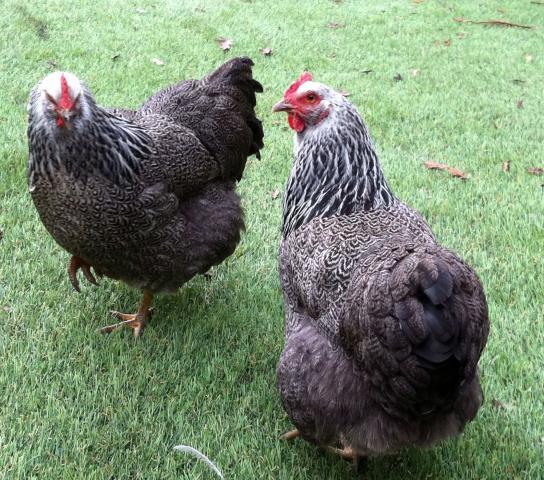lol punky,
I leave a while and you and cubanlongtails get into.
Cubalayas are slower to mature than many fowl; not just those in the American class. According to the ALBC office (remember they never gave me a source for the information; so I'm going on trust here), in Cuba the Cubalaya are segregated into two basic strains: one for egg laying and one for meat production.
My Cubalayas lay around 150 eggs as 2 year old hens. We eat around 200 a year (culls). What kind of production they have in Cuba I do not know nor would I venture to guess.
Here in the States most of the Cubalaya lines (and there are several) have deteriorated. Two of the best lines are related (Sam Brush line -Linda Bayliss) as I understand it. I obtained birds from both. I also have birds from the Castignetti line: which at one time were simply splendid. I also have birds from the Finch line (small) and the Rice line. (I would be remiss if I did not mention the birds of Billy Bender and Jim Zook which they have had for years and are quite good; I do not have any of theirs).
Each of the above lines have different characteristics. In part this is because the came from different importations and from different parts of Cuba.
I hatch as many or more than any individual breeder in the country. I cull very hard. However, to ever establish the Cubalaya as either a meat bird strain or egg laying strain would require more birds hatched, space and time than I have. I am trying to do my small part to save and improve this breed.
I raise Cubalayas because I like them. If I didn't I wouldn't keep them. These birds have never had the number of dedicated breeders that it is required to bring them up to the status of meat and egg production of the American class.
Honestly, I think they are one of the most beautiful birds I have ever had to pleasure to see.
By the way, I have the following colors:
BBR
White
Black
Blue
Blue BR
GDW
SDW
Blue SDW
Bue GDW
Red Pyle
I could say more, much more, but I doubt that you or anyone else would really be interested in my ramblings.















